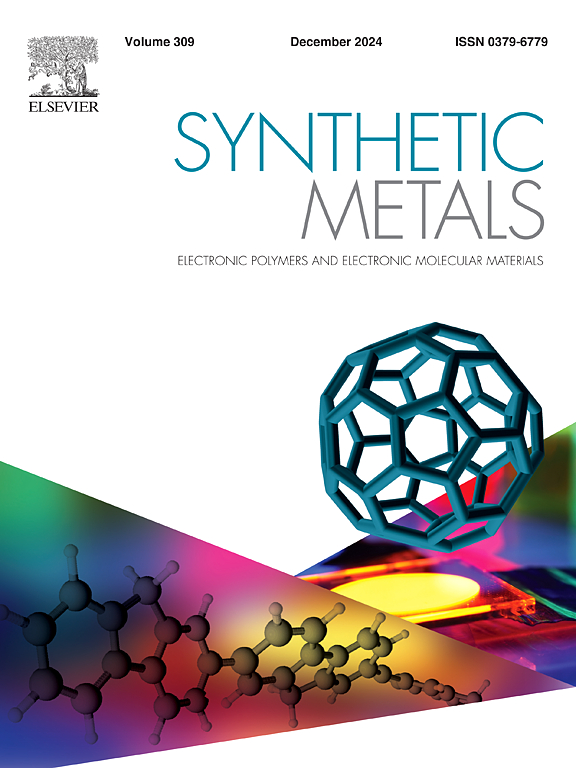A versatile GdFeO3/NiO@g-C3N4 ternary hetero-structure photo catalyst for effective photo-degradation and adsorption of tetracycline and ciprofloxacin from wastewater
IF 4
3区 材料科学
Q2 MATERIALS SCIENCE, MULTIDISCIPLINARY
引用次数: 0
Abstract
In modern times, effective removal of pharmaceutical effluents from wastewater is considered an alarming issue. In our research efforts, we have synthesized NiO and graphitic carbon nitride (g-C3N4)-decorated ternary GdFeO3/NiO@g-C3N4 heterostructure nanocomposites (NCs) for the enhanced removal of tetracycline (TC) and ciprofloxacin (CIP) antibiotics from wastewater. The GdFeO3 nanoparticles (NPs) were fabricated using a facile one-pot hydrothermal approach and the ternary NCs via an ultra-sonication approach. The structural investigation of the as-fabricated materials revealed single-phase GdFeO3 and the effective fabrication of GdFeO3/NiO@g-C3N4 NCs. Morphological analysis exhibited a round, spherical flake-like structure with heterogeneous morphology. The BET and I-V analysis exhibited improved surface and electrical features and was observed to be 43, 87, and 117 m2/g and 6.51 10−4 S/m, 3.6710−2 S/m, and 84.81 S/m for GdFeO3 NPs, GdFeO3/NiO NPs, and GdFeO3/NiO@g-C3N4 NCs, respectively. A decline in the PL intensity was observed, which exhibited the excellent separation and stabilization of the photo-genic charge pair’s. Optical band gap energy for GdFeO3 NPs, GdFeO3/NiO NPs, and GdFeO3/NiO@g-C3N4 NCs was observed to be 2.34, 2.19, and 2.03 (eV), respectively. The GdFeO3/NiO@g-C3N4 NCs show excellent photo-degradation of CIP and TC antibiotics under visible light, achieving 92.42 % and 94.23 % in 45 min with 4.7 % and 5.1 % removal via adsorption. Reusability testing exhibited only 1.3 % loss in catalytic activities after 5 runs. The h+, •O2-, and the (•OH) radicals are the primarily involved in the photo-degradation of CIP and TC. The g-C3N4-based GdFeO3/NiO@g-C3N4 NCs with their highly conducting nature, the narrow band gap, improved electrical and optical properties, well-porous structures, and excellent photocatalytic activities against environmental pollutants might have advantageous applications in photo-catalysis.
一种多功能 GdFeO3/NiO@g-C3N4 三元异质结构光催化剂,可有效光降解和吸附废水中的四环素和环丙沙星
在现代社会,有效去除废水中的制药废水是一个令人担忧的问题。在我们的研究工作中,我们合成了氧化镍和石墨氮化碳(g-C3N4)装饰的三元 GdFeO3/NiO@g-C3N4 异质结构纳米复合材料(NCs),用于增强去除废水中的四环素(TC)和环丙沙星(CIP)抗生素。GdFeO3 纳米粒子(NPs)是通过简单的一锅水热法制造的,三元 NCs 则是通过超声波法制造的。对制备的材料进行的结构研究表明,GdFeO3 为单相,并有效地制备了 GdFeO3/NiO@g-C3N4 NCs。形态分析表明,该材料具有圆形、球形片状结构和异质形态。BET 和 I-V 分析表明,GdFeO3 NPs、GdFeO3/NiO NPs 和 GdFeO3/NiO@g-C3N4 NCs 的表面和电气特性得到改善,分别为 43、87 和 117 m2/g,6.51 ×10-4 S/m、3.67×10-2 S/m 和 84.81 S/m。观察到聚光强度下降,这表明光生电荷对实现了良好的分离和稳定。GdFeO3 NPs、GdFeO3/NiO NPs 和 GdFeO3/NiO@g-C3N4 NCs 的光带隙能分别为 2.34、2.19 和 2.03(eV)。在可见光下,GdFeO3/NiO@g-C3N4 NCs 对 CIP 和 TC 抗生素的光降解效果极佳,45 分钟内分别达到 92.42% 和 94.23%,吸附去除率分别为 4.7% 和 5.1%。可重复使用性测试表明,经过 5 次运行后,催化活性仅下降了 1.3%。h+、-O2- 和 (-OH) 自由基是参与 CIP 和 TC 光降解的主要自由基。基于 g-C3N4 的 GdFeO3/NiO@g-C3N4 NCs 具有高导电性、窄带隙、更好的电学和光学性能、良好的多孔结构以及针对环境污染物的优异光催化活性,可能会在光催化领域得到有利的应用。
本文章由计算机程序翻译,如有差异,请以英文原文为准。
求助全文
约1分钟内获得全文
求助全文
来源期刊

Synthetic Metals
工程技术-材料科学:综合
CiteScore
8.30
自引率
4.50%
发文量
189
审稿时长
33 days
期刊介绍:
This journal is an international medium for the rapid publication of original research papers, short communications and subject reviews dealing with research on and applications of electronic polymers and electronic molecular materials including novel carbon architectures. These functional materials have the properties of metals, semiconductors or magnets and are distinguishable from elemental and alloy/binary metals, semiconductors and magnets.
 求助内容:
求助内容: 应助结果提醒方式:
应助结果提醒方式:


